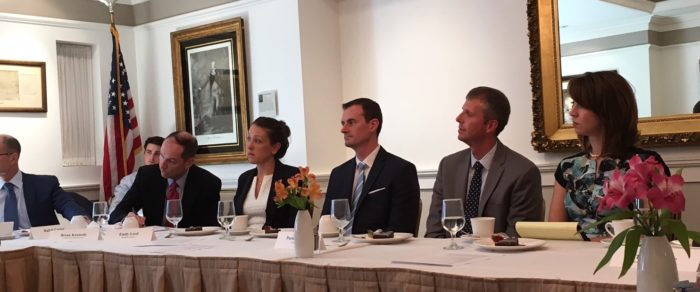Healthy lives and well-being for all are among the United Nations’ Sustainable Development Goals for 2030. The U.N. calls for “access to quality essential health-care services and access to safe, effective, quality and affordable essential medicines and vaccines for all.”
But getting necessary medical care to communities across the globe is no simple task. So at a recent Global Alliance for Patient Access roundtable event, the group posed a broad but essential question: What are the critical international barriers to patient access?

- Weak supply chains & infrastructure. New medical therapies can be groundbreaking for underdeveloped countries – but only if the supply chain, infrastructure and logistics capabilities exist to get them to people who need them. As Nicolette Louissaint, PhD, of Healthcare Readyexplained, supply chain vulnerabilities can compound patient access challenges in the event of natural disasters.
- Insufficient financing & resources. “Poverty leads to poor health outcomes, and poor health outcomes lead to poverty,” explained David Greeley of the American International Health Alliance. On an individual patient level, both the cost of medical care and the distance required to receive it can be dramatic barriers to access. On a national level, a government’s financial commitment to health care directly impacts patients’ health and access.
- Weak intellectual property protections. Another factor is intellectual property protections for companies that create innovative treatments with global value. Stephen Ezell of the Information Technology and Innovation Foundation explained that countries with stronger IP rights see innovative medicines sooner. He also noted that, despite popular misconception, stronger IP protections do not always mean increased drug prices.
- Limited health care workforce. During the discussion, the widespread lack of health care workers emerged as a primary contributor to access challenges. Particularly in underdeveloped countries and even in rural areas of developed ones, there are just not enough physicians, nurses and support staff to meet medical needs.
Dr. Louissaint noted that the role and social status of healthcare workers varied country to country. Where respect for health care professionals was lower or where health care workers juggled multiple jobs, patients could face increased barriers and potentially lower quality of care.
Solving the workforce challenge sometimes requires changing the rules. Tom Kenyon of Project HOPE described how access to treatment in Ethiopia improved once nurses were allowed to administer antiretroviral treatments for HIV/AIDS. It also requires significant investment in health systems strengthening, so low- and middle-income countries can develop and sustain the capacity to train health workers, noted Mr. Greeley.
- Education & cultural challenges. Cultural barriers can present access challenges from outside the health care arena. Suspicions about Western medicine, gender roles, and cultural preconceptions about public health issues such as burial can all impact health care, especially in developing countries. Education presents a related challenge. The job of government, international aid and health care workers often includes teaching patients about health basics, such as how diseases are transmitted, and encouraging communities to overcome stigma.
In addition to the leadership of the United Nations and the World Health Organization, public-private partnerships and multilateral efforts play a role in tackling these challenges. Meanwhile, organizations such as those at the GAfPA roundtable event continue to work toward defining, communicating and tackling the diverse challenges that stand between patients around the globe and the widespread health access envisioned by the United Nations.

